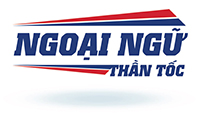- Tra nghĩa đoạn: nhấp chuột (click) vào đoạn cần dịch nghĩa.

Designers are increasingly using different kinds of materials to produce products that do not harm the environment.
Reused plastic bottles, wood, plant fiber, and even seaweed are being used in place of traditional materials for household goods and clothing.
Unusual materials
Nina Edwards Anker’s sconces and chandeliers look like ancient pieces of paper placed around electronic lights known as LEDs.
But a closer look shows that they are made of algae.
Anker came up with the idea while working on a doctoral research project at the Oslo School of Architecture and Design.
Anker chose not to hide the dried algae. “From the beginning, we wanted to keep the integrity of the material, and display its unique properties,” Anker said.
She is one of many designers thinking about traditional materials. She wants to find ways to mix design ideas with production and supply methods that do not use up resources.
A show for new materials in Germany
Heimtextil is an international trade show, or fair, for new textiles in Frankfurt, Germany. This year’s fair placed attention on making new products that came from reused materials.
Olaf Schmidt is Heimtextil’s vice president of textiles and textile technology.
“We’ll see companies demonstrating how inorganic materials like nylon, plastic and metal can be reused – for example, carpet tiles that can be dismantled at the end of their life and used as a raw material for new tiles,” he said.
He added, “And there’s seaweed, used to produce acoustic mats and panels that provide great insulation, are fire-resistant and regulate humidity well…At the end of their life, the panels can be shredded and reused.”
Fashion industry expert Veronika Lipar described the field’s most important change – a move to sustainability. She said, “The industry is trying to minimize its” effect “on the environment and no longer be the biggest polluter.”
Many companies using other materials
Patagonia, North Face and Timberland are among the companies now using natural materials to produce goods.
Italian company Frumat has developed a plant-based leather made from the waste created by apple juice makers.
Two Mexican developers, Adrian Lopez Velarde and Marte Cazarez, have created a leather they call “Desserto” using nopal cactus leaves. Cactus plants are of interest to new material developers because they can live in hot climates and poor soil.
Pinatex helps support farms in the Philippines by using waste from the pineapple harvest to create material that is sold to makers of shoes, clothing and other products.
And Bolt Threads, a company based in California, created Mylo, a mycelium-based leather that is used by companies like Adidas, Lululemon and designer Stella McCartney.
Các nhà thiết kế đang ngày càng sử dụng nhiều loại vật liệu khác nhau để tạo ra các sản phẩm không gây hại cho môi trường.
Chai nhựa tái sử dụng, gỗ, sợi thực vật và thậm chí cả rong biển đang được sử dụng thay cho các vật liệu truyền thống cho đồ gia dụng và quần áo.
Vật liệu khác thường
Đèn treo tường và đèn chùm của Nina Edwards Anker trông giống như những mảnh giấy cổ được đặt xung quanh đèn điện tử được gọi là đèn LED.
Nhưng nhìn kỹ hơn cho thấy chúng được làm từ tảo.
Anker nảy ra ý tưởng này khi đang làm việc cho một dự án nghiên cứu tiến sĩ tại Trường Kiến trúc và Thiết kế Oslo.
Anker đã chọn không giấu tảo khô. “Ngay từ đầu, chúng tôi muốn giữ chính trực của vật liệu, và thể hiện của các tài sản độc nhất của nó,” Anker nói.
Cô ấy là một trong nhiều nhà thiết kế nghĩ về chất liệu truyền thống. Cô ấy muốn tìm cách kết hợp các ý tưởng thiết kế với các phương pháp sản xuất và cung ứng không sử dụng hết tài nguyên.
Một buổi triển lãm vật liệu mới tại Đức
Heimtextil là một triển lãm thương mại quốc tế, hay hội chợ, dành cho những nhà dệt may mới ở Frankfurt, Đức. Hội chợ năm nay tập trung vào việc tạo ra các sản phẩm mới từ vật liệu tái sử dụng.
Olaf Schmidt là phó chủ tịch phụ trách dệt may và công nghệ dệt may của Heimtextil.
“Chúng ta sẽ gặp các công ty trình bày cách tái sử dụng các vật liệu vô cơ như nylon, nhựa và kim loại – ví dụ như gạch thảm có thể được tháo dỡ khi hết tuổi thọ và được sử dụng làm nguyên liệu thô cho gạch mới,” ông nói.
Anh ấy nói thêm, “Và có rong biển, được sử dụng để sản xuất thảm cách âm và các bảng cái mà cung cấp vật liệu cách nhiệt tuyệt vời, chống cháy và điều tiết độ ẩm tốt… Khi hết tuổi thọ, các tấm có thể được cắt nhỏ và tái sử dụng.”
Chuyên gia thời trang trong ngành Veronika Lipar đã mô tả sự thay đổi quan trọng nhất của lĩnh vực này – một bước chuyển sang tính bền vững. Cô ấy nói, “Ngành công nghiệp đang cố gắng giảm thiểu “ảnh hưởng” của nó đối với môi trường và không còn là kẻ gây ô nhiễm lớn nhất nữa.”
Nhiều công ty sử dụng các vật liệu khác
Patagonia, North Face và Timberland là một trong những công ty hiện đang sử dụng vật liệu tự nhiên để sản xuất hàng hóa.
Công ty Frumat của Ý đã phát triển một loại da làm từ thực vật được làm từ chất thải của các nhà máy sản xuất nước ép táo.
Hai nhà phát triển người Mexico, Adrian Lopez Velarde và Marte Cazarez, đã tạo ra một loại da mà họ gọi là “Desserto” bằng lá cây xương rồng nopal. Cây xương rồng được các nhà phát triển vật liệu mới quan tâm vì chúng có thể sống ở vùng khí hậu nóng và đất nghèo dinh dưỡng.
Pinatex giúp hỗ trợ các trang trại ở Philippines bằng cách sử dụng chất thải từ vụ thu hoạch dứa để tạo ra nguyên liệu bán cho các nhà máy sản xuất giày dép, quần áo và các sản phẩm khác.
Và Bolt Threads, một công ty có trụ sở tại California, đã tạo ra Mylo, một sợi nấm da dựa trên được sử dụng bởi các công ty như Adidas, Lululemon và nhà thiết kế Stella McCartney.

